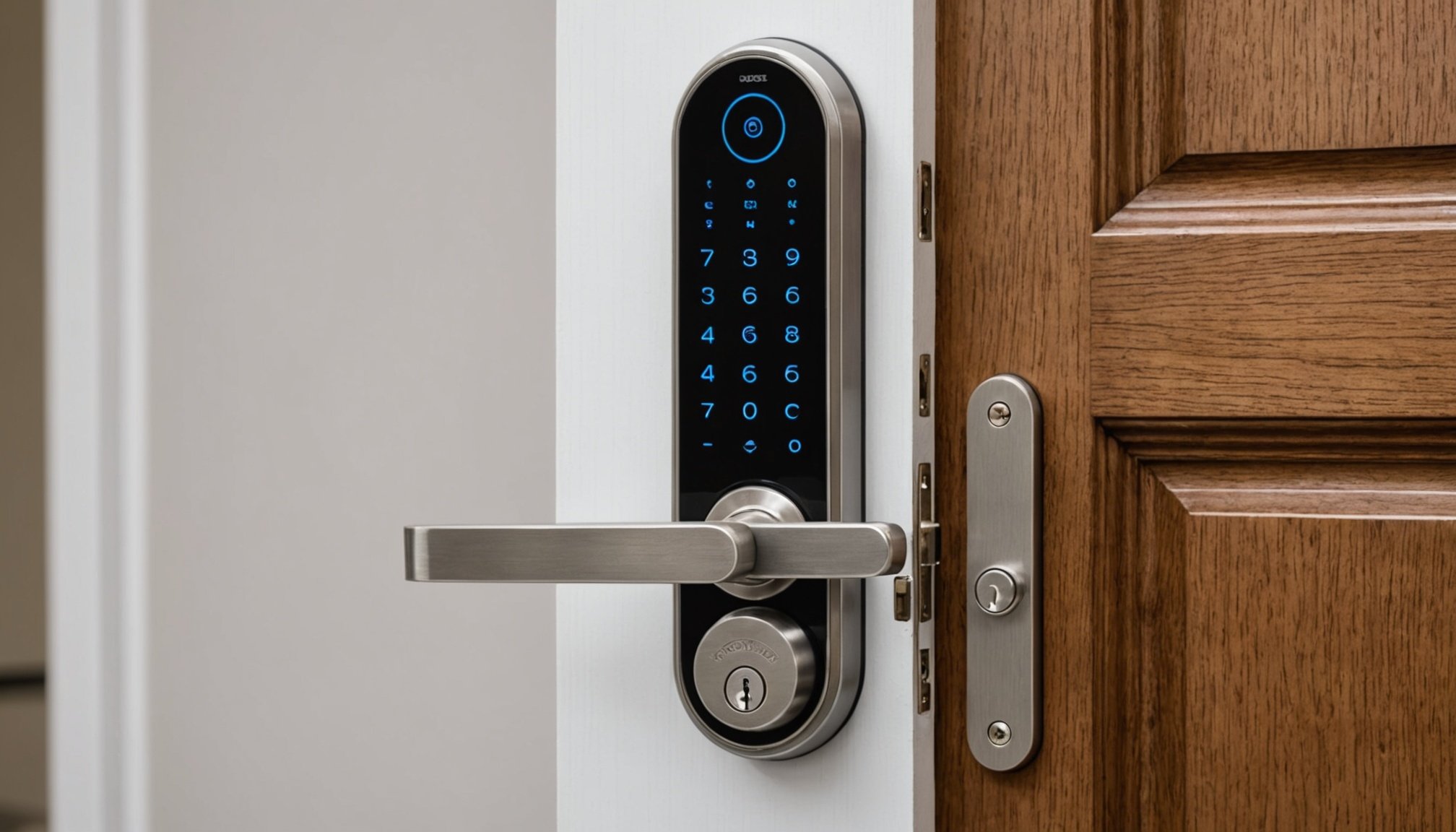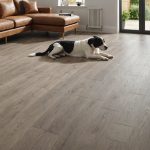Overview of Smart Lock Brands
Smart lock brands in the UK offer solutions that fuse convenience and security through cutting-edge security technologies. With numerous options available, selecting the right brand involves evaluating compatibility, features, and reputation.
Several leading brands dominate the UK market, each with its unique offerings. Some key players include August, Yale, and Nuki. August offers seamless integration with smart home systems, making it a favourite for those who prioritise connectivity. Yale, with its long-standing reputation, showcases robust mechanical and digital solutions that appeal to traditionalists and tech enthusiasts alike. Nuki stands out with its easy installation process and high compatibility with European doors, making it a practical choice for many households.
This might interest you : Discover the Most Effective Draught-Exclusion Methods for UK Period Properties
For consumers, understanding UK compatibility involves ensuring that the smart lock fits the specific requirements of UK door standards. Ensuring compatibility can save both time and money, avoiding potential installation challenges.
When discussing security, the importance of brand reputation cannot be overstated. Brands like Yale have built trust over decades, instilling confidence in their security solutions. Customer ratings are another metric; high ratings often reflect user satisfaction, reliability, and effectiveness.
Topic to read : Effortless Elegance: Designing a Low-Maintenance Front Yard for UK Homeowners
In conclusion, a thorough review of smart lock brands enables consumers to make informed decisions that prioritise security and innovation.
Compatibility with UK Doors
Navigating the installation of smart locks in the UK demands a clear understanding of door compatibility. Let’s delve into common UK door types and the considerations needed for an effective smart lock fitting.
Understanding UK Door Types
In the UK, you will commonly encounter doors made from wood, uPVC, and composite materials. Each door type brings distinct characteristics that can influence smart lock compatibility. Wooden doors are traditional and offer flexibility but may require careful adjustments. uPVC doors, popular for their durability and insulating properties, often come with Euro cylinder locks. Composite doors, known for combining strength and aesthetics, frequently present a unique fitting challenge due to their structure.
Compatibility Challenges and Solutions
The key to successful smart lock installation is to consider the existing lock system. Euro cylinders are prevalent in uPVC doors and are generally harmonious with smart locks. Conversely, mortice locks, often found in wooden doors, may require bespoke solutions or additional hardware. Before proceeding, verify the lock type and door structure to ensure seamless integration.
Smart Lock Fitting Guidelines
- Check Compatibility: Confirm the smart lock supports your door and existing lock type.
- Professional Installation: Consider hiring an expert to avoid compatibility mishaps.
- Proper Measurements: Accurately measure the lock space to prevent fitting issues.
Understanding these factors will enable you to choose a smart lock that fits perfectly with your UK door.
Installation Tips for Smart Locks
When tackling the task of smart lock installation, it’s crucial to approach it with a clear plan, whether you prefer a DIY approach or opt for professional installation.
Step-by-Step Installation Process for Common Smart Lock Models
Begin by carefully unboxing your smart lock, checking all components are included. For most models, you’ll first remove the existing lock on your door. Align the new latch with the door hole, ensuring it’s the correct length. Insert the mounting plate, followed by attaching the exterior and interior components of the lock. Secure everything with the provided screws, and then install the batteries. Most smart locks require syncing with a smartphone app for initial setup.
DIY Considerations vs. Hiring a Professional Installer
A DIY installation offers cost-saving benefits and a sense of achievement. However, it demands precision to ensure the lock fits perfectly and operates smoothly. On the other hand, professional installation provides peace of mind with a seamless setup but at an additional cost. When deciding, consider your comfort level with tools and technology.
Common Challenges and Troubleshooting During Installation
Common challenges include misaligned components or connectivity issues. Ensure all parts fit snugly and follow the manual precisely. If the lock doesn’t connect to your network, reset the device and verify Wi-Fi strength. Troubleshooting with patience often resolves many installation hiccups.
Smart Lock Features Comparison
Smart locks have transformed how we approach home security by integrating modern technology with traditional locking mechanisms. Here’s a thorough comparison of key smart lock features to consider when deciding which suits your needs best.
One of the essential features to investigate is keyless entry. This advancement allows homeowners to enter without traditional keys, often through a smartphone app. This cutting-edge feature provides additional convenience, minimizing the risk of losing keys.
Remote access is another crucial feature worth examining. It grants users the ability to lock or unlock their doors from virtually anywhere. Imagine needing to let a trusted friend into your home while you’re out running errands—remote access is your answer.
Now, shifting focus to security options, the importance of encryption cannot be overstated. Many smart locks utilize encryption methods to ensure that transmitted data remains secure. Furthermore, advanced sensor technology provides additional layers of protection, detecting unauthorized access attempts and notifying users accordingly.
In the UK market, user preferences have begun favoring devices that combine superior automation with robust security. More and more users gravitate towards smart locks that integrate seamlessly with other home automation systems, offering versatility and heightened convenience. As trends evolve, these features continue to shape consumer expectations in the smart lock landscape.
Pricing and Value Assessment
Assessing smart lock pricing involves understanding the balance between cost and value. Various factors influence the price of these devices, and understanding these can help decision-making.
Overview of Pricing Ranges
Smart locks are available in a wide range of prices, generally falling between $100 and $400. Basic models with essential features tend to be on the lower end of the pricing spectrum, while advanced models offering premium functionalities and more robust security solutions are more expensive.
Factors Influencing the Cost
Several elements contribute to smart lock pricing:
- Features: Additional features such as remote access, integration with home automation systems, and advanced security technologies add to the cost.
- Material: The material used in the construction, such as stainless steel versus plastic, can vary the product cost.
- Brand Reputation: Renowned brands often charge more due to perceived reliability and support services they provide.
Long-term Value and Return on Investment
When considering value for money, it’s crucial to think about the long-term benefits. A pricier, durable smart lock may offer better security and require fewer replacements, providing a higher return on investment over time. Upfront costs may be significant, but the long-lasting benefits can outweigh initial expenses.
User Reviews and Feedback
User experiences with smart lock brands reveal a diverse range of opinions and feedback, each offering valuable insights for potential buyers. According to customer feedback, many users appreciate the convenience smart locks bring, especially regarding hands-free access and remote control through smartphones.
Smart lock ratings often reflect user satisfaction with connectivity features and ease of installation. However, a few common issues are also frequently mentioned. Some users report difficulties with battery life and Wi-Fi connectivity, which can affect overall lock performance. These challenges often find resolution through software updates provided by manufacturers or enhancements to connectivity settings in user manuals.
Customer feedback highlights a high satisfaction rate with certain models, such as those offering seamless integration with smart home systems. This feature not only increases user utility but also reinforces trust in specific brands.
- Common Recommendations:
- Smart locks with auto-lock features enhance security.
- Models compatible with virtual assistants strengthen usability.
- Positive experiences often link to products offering dependable customer support.
These insights from real-world usage are instrumental for those considering the purchase of a smart lock, offering guidance based on actual user scenarios. Exploring top-rated models can lead to informed decisions aligning with personal security and convenience needs.
Security Features of Smart Locks
In today’s world, the security of smart locks is a top priority for homeowners. These devices utilise a combination of cutting-edge technologies to safeguard your home. Primarily, smart locks employ encryption and access control to prevent unauthorised entry.
Encryption plays a vital role in smart lock security, ensuring data transmitted via Bluetooth remains secure. Advanced smart locks often feature biometric technology, allowing users to unlock doors with fingerprints, offering a high level of personalised security. In addition, keypad entry systems provide a reliable backup method and prevent dependence on a single technology.
Access control is another key aspect, enabling homeowners to manage who can and cannot enter their property. Two-factor authentication (2FA) enhances smart lock security by requiring two forms of identification before granting access. This may involve a combination of a password and a biometric verification or a temporary code sent via a smartphone app.
In the UK, enhancing smart lock security further involves keeping software updated to defend against the latest threats. It’s also advisable to choose models with robust customer support and regular security patches. Smart locks with these security measures offer the utmost peace of mind, blending technology with practical home security solutions.
Connectivity Options and Smart Home Integration
In the ever-evolving landscape of smart technology, connectivity options are crucial in enhancing user experience, particularly in smart home integration. Various wireless connectivity options, such as Wi-Fi, Zigbee, and Z-Wave, offer distinct capabilities. Wi-Fi is the most common, providing broad coverage and allowing for seamless interaction with most smart home systems. Meanwhile, Zigbee and Z-Wave are renowned for their low energy consumption and robust network reliability, making them popular in extensive home automation settings.
Integrating smart locks into a home automation system exemplifies the fusion of security and convenience, giving users peace of mind. Modern smart locks enhance this integration by offering features such as voice control and automatic locking when boats are closed. Such features are facilitated through connective technologies that allow for easy syncing with a wide range of products, fostering a cohesive smart home environment.
Meanwhile, user preferences for app control and remote access are increasingly focused on flexibility and ease of use. Apps allow users to manage their connectivity options, oversee their smart locks, and monitor network status remotely, all from a smartphone or tablet. This level of easy access ensures that users can adapt and modify settings without hassle, enhancing convenience and efficient home management.
I’m sorry, it seems like there is missing context or information. Could you please provide more details or clarify your request?











